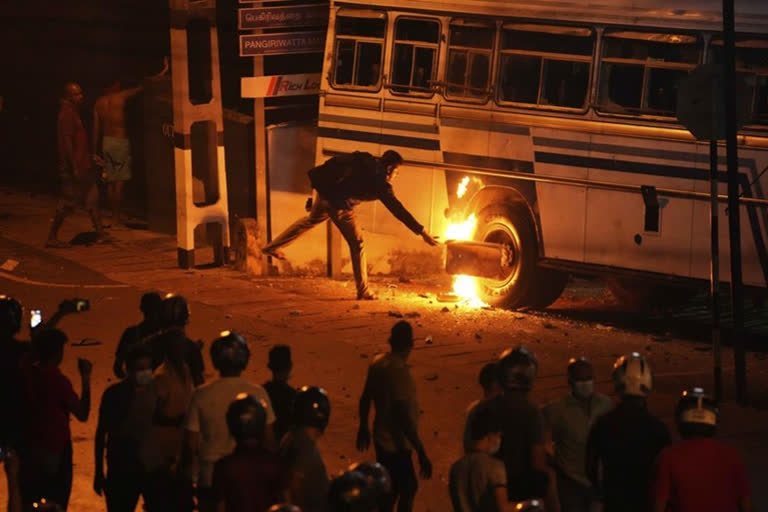Colombo: Sri Lanka's president declared a state of emergency in the island nation Saturday, a day after angry protesters demonstrated near his home demanding he resign and as plans were made for a nationwide protest over the country's worst economic crisis in memory. President Gotabaya Rajapaksa invoked sections of the Public Security Ordinance, which gives him authority to make regulations in the interests of public security, preservation of public order, suppression of mutiny, riot or civil commotion or for the maintenance of essential supplies.
Under the emergency regulations, the president can authorize detentions, take possession of any property and search any premises. He can also change or suspend any law. The order came a day after dozens of people were arrested following protests near the president's home. There are also calls for an island-wide public protest on Sunday. Rajapaksa's office blamed organized extremists within the thousands of protesters for violence during Thursday night's demonstration, where police fired tear gas and a water cannon and arrested 54 people. Dozens of other people were also injured.
Read: Lanka crisis: Protests near President's residence is an act of terrorism, says govt
Nuwan Bopage, an attorney representing some of the suspects, said several of them were being taken for medical examinations for various injuries and were to appear in court Friday. A police curfew that had been implemented in the suburbs of the capital, Colombo, was lifted Friday morning. The protesters blame Rajapaksa for long power outages and shortages of essential goods. Sri Lanka has huge debt obligations and dwindling foreign reserves, and its struggle to pay for imports has caused the shortages. People wait in long lines for fuel, and power is cut for several hours daily because there's not enough fuel to operate generating plants and dry weather has sapped hydropower capacity.
On Thursday, the crowds demonstrating along the roads leading to Rajapaksa's private residence on the outskirts of Colombo stoned two army buses that police were using to block the protesters. They set fire to one of the buses and turned back a fire truck that rushed to douse it. Senior police spokesperson Ajith Rohana told media that 24 police personnel and several other civilians were injured in the unrest, and several vehicles belonging to the police and army were torched by protesters. Total damage was estimated to be around $132,000 and the suspects will be charged with damaging public property, Rohana said. Reporters asked Rohana about accusations that police officers manhandled journalists covering the protests, including the arrest of at least one of them. Rohana said police followed the rules for riot control and took action only after the protest turned violent more than four hours after it started.
Sri Lanka's economic woes are blamed on successive governments not diversifying exports and relying on traditional cash sources like tea, garments and tourism, and on a culture of consuming imported goods. The COVID-19 pandemic dealt a heavy blow to Sri Lanka's economy, with the government estimating a loss of $14 billion in the last two years. Sri Lanka also has immense foreign debt after borrowing heavily on projects that don't earn money. Its foreign debt repayment obligations are around $7 billion for this year alone. According to the Central Bank, inflation rose to 17.5% in February from 16.8% a month earlier. Its expected to continue rising because the government has allowed the local currency to float freely.
Read: Sri Lanka crisis worsens, protest outside President's residence turns violent, 10 injured
AP



